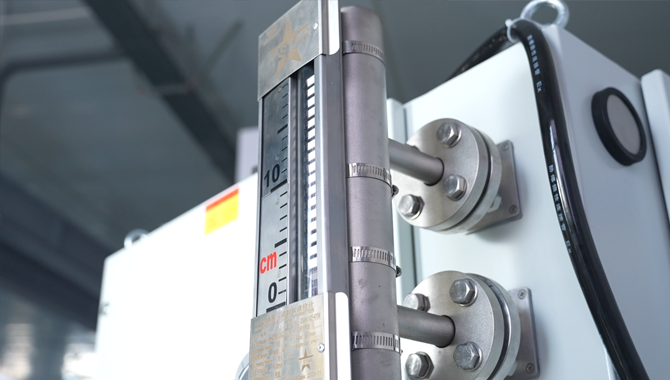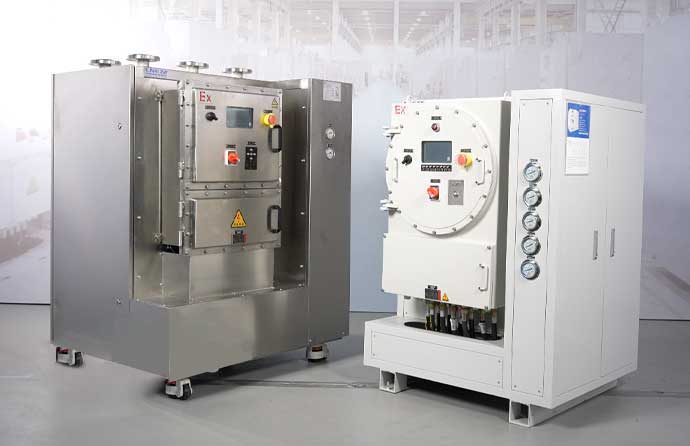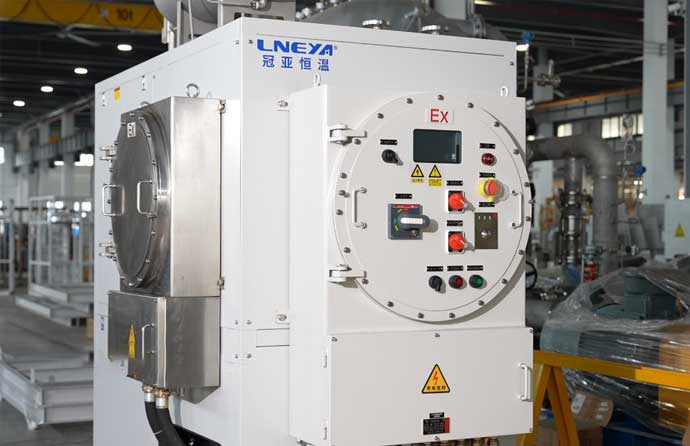How Explosion-Proof Chillers Work — Principles and Design

- How to Upgrade an Old Chiller to Improve Efficiency
- Chiller Tanks Comparison Expansion Tank vs Buffer Tank
- Expansion Tanks in Semiconductor Chillers
- How Explosion-Proof Chillers Work Principles and Design
- Free Cooling vs Mechanical Cooling
- Chiller Custom Service Solutions One-Stop Service
- The Role of Chillers in Hydrogen Production
- What Is the Lifespan of a Chiller
- August 2025
- July 2025
- June 2025
- May 2025
- March 2025
- February 2025
- January 2025
- December 2024
- November 2024
- October 2024
- September 2024
- August 2024
- July 2024
- June 2024
- May 2024
- April 2024
- March 2024
- February 2024
- September 2023
- July 2023
- June 2023
- May 2023
- January 2023
air cooled chiller chiller chillers Cold Assembly Freezer cooling chiller cooling heating circulator cooling heating system cooling water chiller Double-Layer Glass Reactor dynamic temperature control system Fluorinated liquid temperature control freezer gas cooling chiller heating circulator industrial chiller industrial cooling industrial freezer industrial refrigerator jacket reactor liquid cooling chiller low temperature chiller news pharmaceutical chiller process chiller reactor chiller reactor cooling reactor cooling heating reactor heating cooling reactor system refrigerated circulator refrigeration chiller screw chiller semiconductor chiller semiconductor test chiller sundi tcu temperature control test chamber thermostat ultra low temperature chiller vehicle test chiller water chiller water cooled chiller wtd
Industrial sites that handle flammable gases, vapors, or dust need cooling solutions that do more than move heat. A chiller contains electrical and mechanical sources of ignition, so they need explosion-proof chillers that do not add risk. This article explains why these chillers matter, how different explosion-proof methods work, and what to look for when you specify one.
Why you need explosion-proof chillers
Picture a chemical skid where a solvent line leaks a little. The concentration stays below the LEL(Lower Explosive Limit) most of the time, but a tool failure could raise it fast. In that scenario, a conventional chiller with exposed electrical contacts or a sparking motor is a real hazard.
Explosion-proof chillers reduce that risk. They protect people, cut regulatory headaches, and keep production running when safety rules are strict. For plants subject to NFPA, NEC, ATEX, or IECEx requirements, a standard chiller simply will not pass inspection for classified areas.
Outside compliance, the business case is plain. A shutdown after an ignition event costs far more than the premium for a certified unit. And in many regulated industries — petrochemicals, pharma, grain handling — the right chiller is not optional. It’s mandatory.
Explosion-proof types and how they work
There are several ways designers keep a chiller from becoming an ignition source. Each method has tradeoffs in cost, maintenance, and suitability for different hazard types.
1.Positive-pressure (pressurization) systems
Pressurization keeps the chiller’s electrical enclosure at a slightly higher pressure than the surrounding area. Clean, inert air or instrument air flows into the enclosure through a purge system. Any small leak pushes air out.
That prevents flammable gas from entering the cabinet and finding an ignition source. Controls monitor pressure and shut the equipment if the purge fails. Positive-pressure systems work well where you can supply filtered, dry compressed air and where the hazard is gases or vapors.




2.Isolation / flameproof enclosures (Ex d)
Isolation uses heavy, flameproof housings. If an internal explosion occurs, the enclosure contains the blast and cools the expanding gases so flames cannot pass to the outside atmosphere. These housings are robust.
They add weight and complicate heat removal, so designers must size heat exchangers and fan capacities accordingly. Flameproof chillers are common where purge air is impractical and where enclosure integrity can be maintained easily.
3.Intrinsic safety and increased-safety designs (Ex i / Ex e)
Some components get designed to limit energy so they cannot spark or heat to ignition temperatures. Intrinsic safety lowers current and voltage so circuits cannot produce enough energy to ignite a gas. Increased-safety removes likely ignition sources by improving clearances, avoiding hot spots, and using specially rated terminals.
These approaches often apply to control and instrumentation circuits rather than main power feeders. They reduce the need for heavy enclosures but require careful component selection and certified wiring practices.
4.Purge and purge-pressurization hybrids
A purge system can be combined with other protections. For example, a purge can keep enclosure air clean while the motor and terminals remain in an Ex d box. Hybrid systems give flexibility in tight spaces or where cooling loads make full enclosures impractical.
5.Water-jacketed and non-sparking components
In some cases, designers use water-jacketed motor housings to keep surface temperatures low. They also specify non-sparking tools, bronze or stainless bronze fans, and specially coated fasteners. These measures target hot surfaces and mechanical friction as potential ignition sources.
Design elements of explosion-proof chillers
A compliant chiller involves multiple layers of protection. Below are the typical design features.
1.Sealed and certified electrical components
All wiring, starters, contactors, and terminals inside the hazardous-area cabinet must be certified. That means using explosion-rated motors, terminals with dust-tight seals, and cable glands rated for the class of service. The installer must follow the wiring practices shown in the certification documents. A certified component list saves headaches at inspection.
2.Explosion-proof housings and ducts
Enclosures that meet Ex d or equivalent standards must handle internal pressures and channel any energy safely. Heat rejection paths need attention, a heavy shell conducts heat poorly, so the design often adds extra cooling surface area or forced ventilation in the safe area. Ducting for intake and exhaust must preserve the enclosure rating or be routed to a safe zone.

3.Special cables, glands, and connectors
Cable entries are a weak point. Use certified glands and bonded fittings. Flexible conduits and armored cable reduce mechanical stress. For purge systems, add check valves and filters so incoming air stays clean.
4.Purge and pressure monitoring systems
A purge module must control flow, filter the air, and monitor pressure. It usually includes fail-safe interlocks that prevent the chiller from starting if the enclosure pressure falls below setpoints. Many systems log purge performance for compliance records.
5.Gas detection and interlocks
Adding local gas detectors that tie into the chiller PLC is a strong option. If a detector sees elevated levels, it can close dampers, trigger alarms, or ramp down noncritical loads. Integrating detection with the chiller control gives operators time to respond before a hazardous build-up reaches critical concentration.
6.Temperature management and T-rating
Designers must ensure no external surface exceeds the T-rating required by the classified gas. That covers motor housings, heat exchangers, and control enclosures. Using low-surface-temp materials, water jackets, or secondary shielding helps meet this requirement.
7.Mechanical protections and venting
If a design relies on containing an internal fault, the enclosure needs venting paths that channel pressure safely or rupture panels that prevent catastrophic structural failure. These features must meet the regulatory tests for the chosen protection class.
Key considerations when custom an explosion-proof chiller
Choosing the right unit takes more than picking a certification label or a brand. Here are the practical factors to weigh.
1.Know the hazardous area classification
Is the area Class/Division (US) or Zone (IEC/ATEX)? Do you face gases, vapors, or combustible dust? The classification determines which protection methods and certifications qualify. Don’t guess. Use a qualified engineer or the site’s HAZOP documentation.
2.Match the surface temperature to the T-rating
A chiller’s hottest external point must stay below the ignition temperature of the worst-case gas. That T-rating drives motor selection, enclosure choices, and any cooling mitigation measures.
3.Consider maintenance logistics and downtime costs
How often will you need to open enclosures? Can you provide purge air on site? If maintenance teams perform work in classified areas, factor in hot work permits, purge intervals, and the time to re-certify enclosures after servicing.

4.Integration with plant controls and safety systems
The chiller should communicate alarms, purge faults, and gas alarms to the plant DCS or PLC. Remote monitoring reduces site trips and lets maintenance act before alarms escalate.
5.Physical constraints and environmental factors
Outdoor units face rain, salt spray, and temperature extremes. Indoor units may sit in confined skids. The protection method you select must survive the environment and still meet the classification.
6.Spare parts and vendor support
You should confirm vendor support for replacement explosion-rated parts. Off-the-shelf components are not interchangeable with certified parts. Long lead times on certified parts are common; plan spares accordingly.
7.Energy use and operational cost
Explosion-proof designs can raise initial cost and energy use. That said, modern variable-speed drives and optimized heat exchangers can offset some of that penalty. Run a lifecycle cost comparison, not just a purchase-price check.
Conclusion
If your plant handles flammable gases or dust, don’t treat the chiller as a normal commodity. Talk to a chiller manufacturer that can show certification test reports and a clear maintenance plan — LNEYA.
Our explosion-proof chillers carry multiple internationally recognized certifications. We’ll identify the protection type and level your application needs and design the best-performing explosion-proof configuration within your budget.
Related chillers
CONTACT US
TEL:
EMAIL:
WeChat & WhatsApp:

Wechat QR

Have a question or need a quote? Fill out the form below, and our team will get back to you within 24 hours.
 LNEYA Industrial Chillers Manufacturer Supplier
LNEYA Industrial Chillers Manufacturer Supplier
















